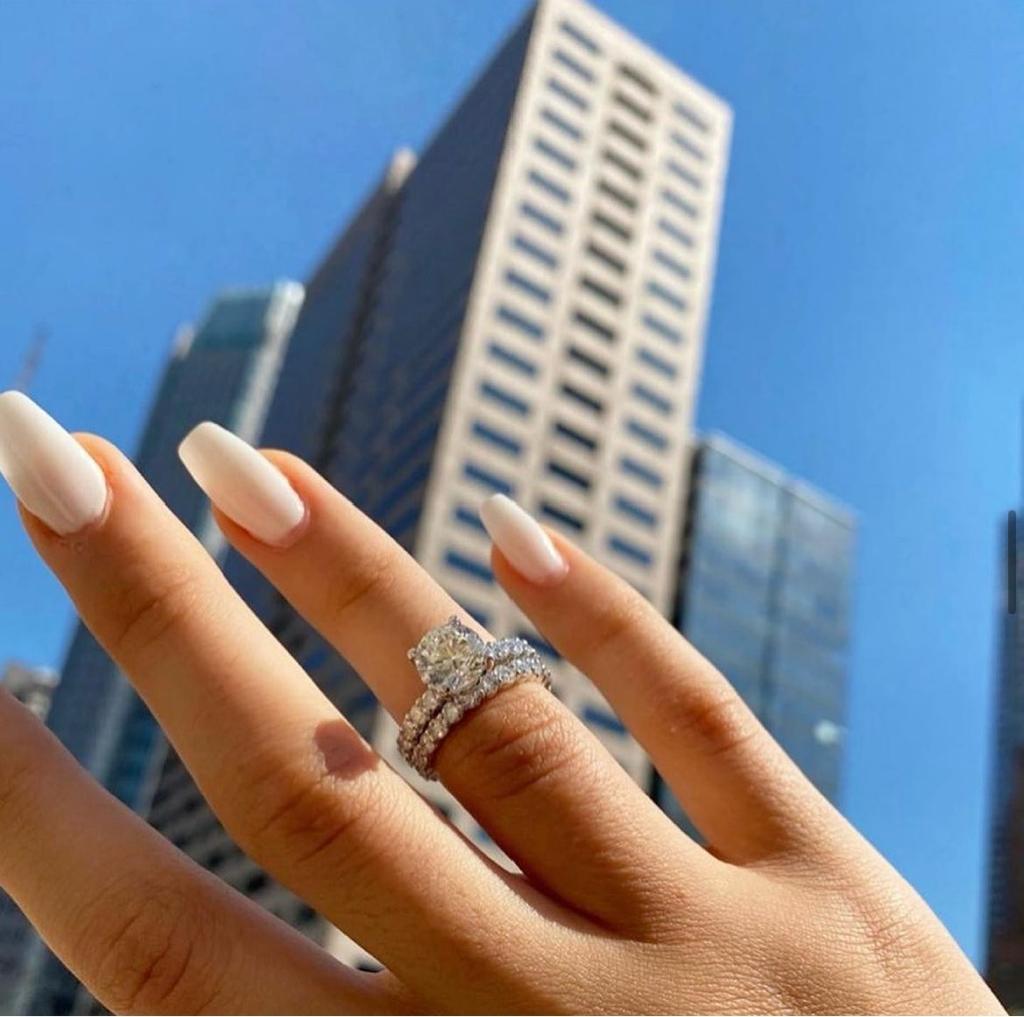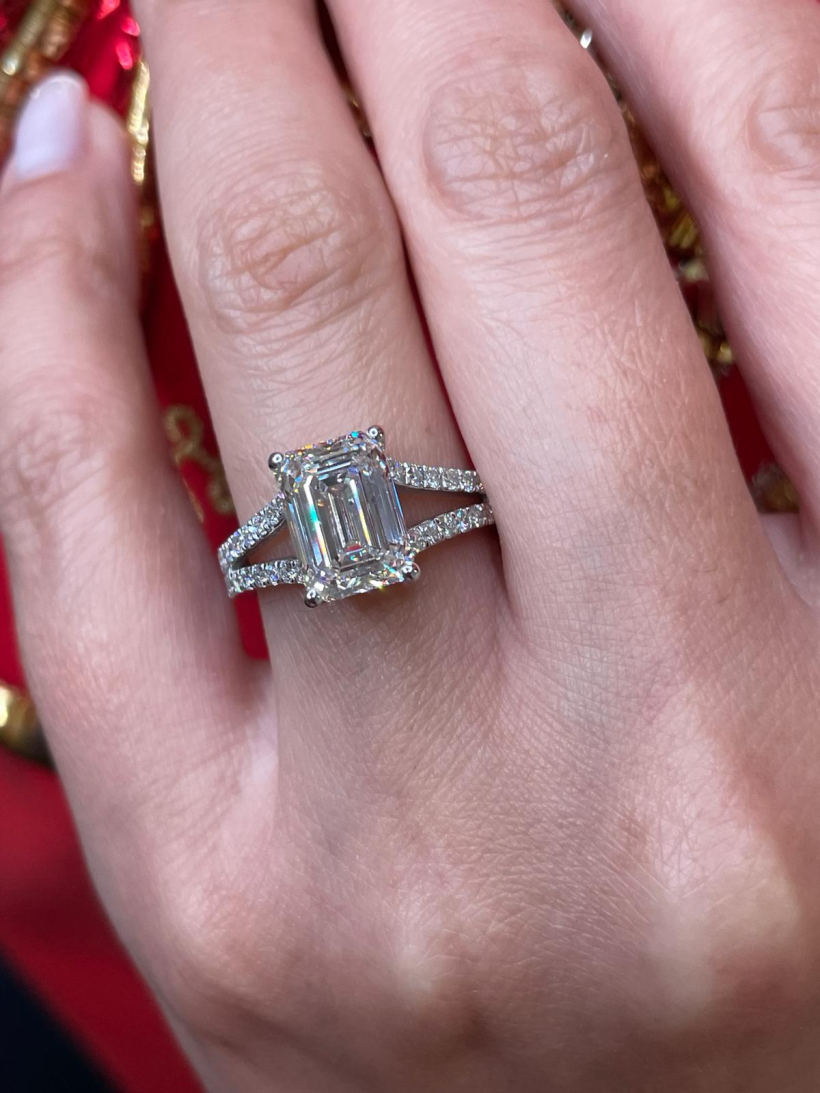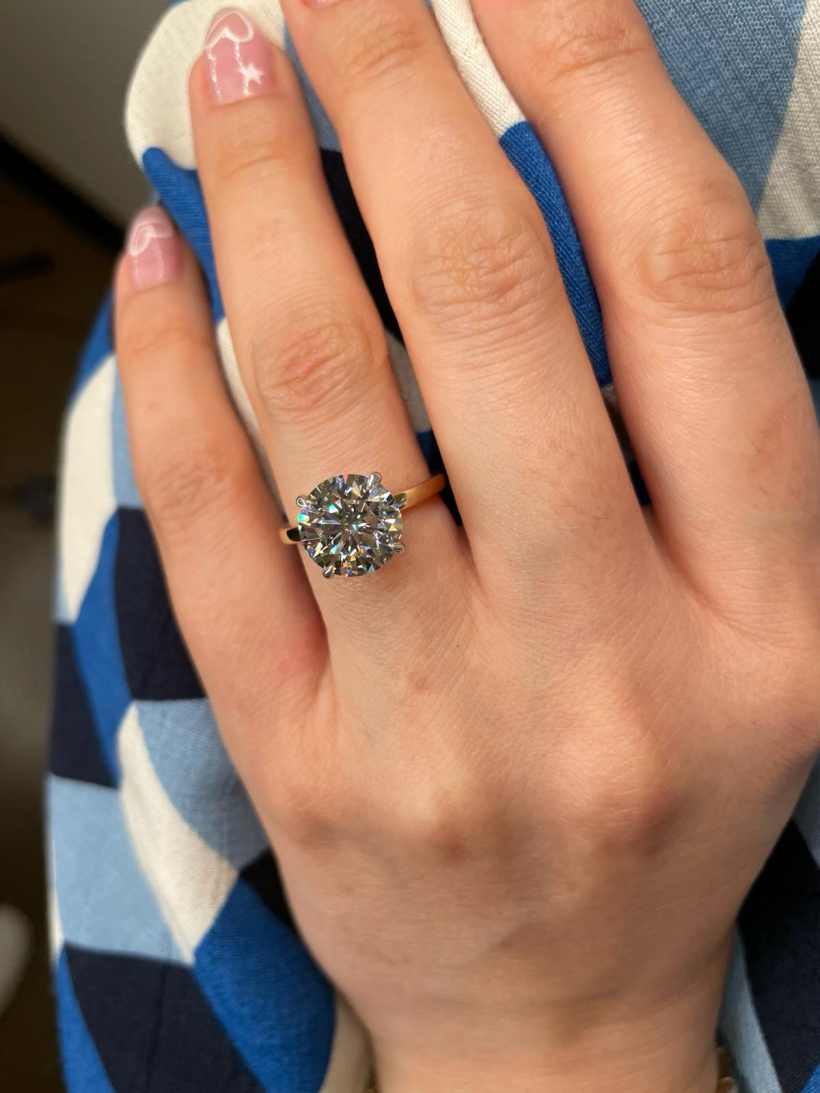Ring resizing may seem like a pain, but it’s actually not as complicated or as expensive as you might think. People get rings resized all the time. Perhaps your fiancé bought a ring without asking your size and you need to make the ring smaller or larger. Maybe you’ve recently lost weight and your ring is too big, or perhaps you’re experiencing inflammation in your fingers and you need your ring to be larger. Regardless of the circumstances, there are several ways to resize your favorite wedding or engagement ring.
But if you’ve never resized a ring before, you probably have a lot of questions. For example, can a ring be sized up? Can you make a ring bigger on your own? Is there an easy way to make a ring fit tighter? Finally, if you can’t find a way to resize your ring, is there a good place to sell your pre-owned ring online?
In today’s guide, we will answer all of these questions and more, but first, let’s look at how ring sizes actually work:
How Ring Sizes Work
Average ring sizes for women usually fall somewhere between 5 and 7, while average ring sizes for men typically fall between 8 and 10. But what do these numbers even mean? Every size assigned to a ring correlates to the interior diameter of the ring or the inner circumference of the ring. It’s usually easier to measure the circumference, as you can even do this on your own with a ruler and a piece of string. However, either measurement method will result in the correct size of your ring.
To better understand how ring sizes work, here is a table with the standard ring sizes and their corresponding measurements:
| Ring Size | Inner Diameter (in mm) | Inner Circumference (in mm) |
| 4 | 14.88 millimeters | 46.8 millimeters |
| 4.5 | 15.29 millimeters | 48 millimeters |
| 5 | 15.70 millimeters | 48.7 millimeters |
| 5.5 | 16.10 millimeters | 50 millimeters |
| 6 | 16.51 millimeters | 51.2 millimeters |
| 6.5 | 16.92 millimeters | 52.5 millimeters |
| 7 | 17.32 millimeters | 53.8 millimeters |
| 7.5 | 17.33 millimeters | 55.1 millimeters |
| 8 | 18.14 millimeters | 56.3 millimeters |
| 8.5 | 18.54 millimeters | 57.6 millimeters |
| 9 | 18.95 millimeters | 58.9 millimeters |
| 9.5 | 19.35 millimeters | 60.2 millimeters |
| 10 | 19.76 millimeters | 61.4 millimeters |
| 10.5 | 20.17 millimeters | 62.7 millimeters |
| 11 | 20.57 millimeters | 64 millimeters |
| 11.5 | 20.98 millimeters | 65.3 millimeters |
| 12 | 21.39 millimeters | 66.6 millimeters |
As you can see, each half-size increase equates to an increase in diameter of about 0.4 millimeters and an increase in circumference of about 1.25 millimeters. It’s important to note that these are North American ring sizes. If you plan to purchase a ring abroad, you’ll need to consider that different parts of Europe, Asia, and Australia use different ring sizes and measurement standards.
How Are Rings Resized?
Traditional engagement ring resizing must be done by a professional. Unfortunately, unless you’re a trained jeweler, you won’t be able to resize an engagement ring on your own (unless you take the less permanent DIY route). Whether a ring needs to be made smaller or larger, it requires a jeweler to cut the band so that it can be rejoined at the correct diameter and circumference.
Resizing Smaller
If you need to make your ring smaller, the process is generally a bit simpler (and less expensive). A jeweler will measure your current ring size. Then, they will cut the band, remove a small amount of the metal, and then rejoin the band again with solder.
Resizing Larger
The process for sizing rings up is a little bit more complicated and usually more expensive. This is because the jeweler must add more metal alloy to the band after making the cut. The cost is dependent on the underlying material. In most cases, engagement ring bands are made of gold, silver, or platinum. In either case, adding these materials increases the cost of the resizing.
How Long Does It Take To Resize A Ring?
Resizing a ring is often a pretty quick process. However, this assumes that you have a standard band. The process can be more complex if you have an interwoven band or a special custom-made ring, in which case the resizing could take several hours or even multiple working days. A really simple resizing could be done in as little as an hour, though some jewelers will not be able to do the resizing on the same day that you bring in your ring. If this is the case, it could take anywhere between one day and two weeks to have your ring resized, depending on how much free time the jeweler has to get the job done.
How Much Does It Cost To Resize A Ring?
It can be very difficult to gauge the cost of resizing a ring. As noted before, the type of resizing can affect the final price. For example, making a ring smaller is typically cheaper than making it larger. However, actually estimating the cost of a ring resizing can be difficult unless you shop around at different jewelers. You may find one jeweler willing to do a resize for as little as $50, while another won’t do the job for less than $500. In short, the cost of resizing a ring varies greatly and depends on a lot of different factors. Be sure to reach out to multiple jewelers to see where you can get the best price.
Ring Resizing Alternatives
It’s important to remember that you don’t have to make drastic changes to your ring if it doesn’t fit. There are less permanent ways to change the size of your ring as well, many of which are easier and less expensive. Some of the most common options include:
- Sizing Beads - Sizing beads are small metal balls that can be attached to the interior edge of your ring to size it down. This method can be simpler than traditional resizing, but it still typically requires the work of a professional, and it doesn’t give you the option to size your ring up.
- Plastic Size Adjusters - Plastic size adjusters are just small plastic wedges that attach to the bottom portion of the band. These offer one of the best DIY solutions to size down your ring. However, like sizing beads, plastic size adjusters don’t allow you to size a ring up.
- Spring Insert - A spring insert is specifically for people who struggle to get a ring over the knuckle of the ring finger. A spring insert expands when there is minimal pressure (effectively sizing the ring down) and contracts when it is exposed to greater pressure. This means that when you slide the ring over your finger, it is less likely to get caught on your knuckle!
As you can see, there are a few different alternatives to traditional resizing. But if you want to size your ring up, you’ll have no choice but to take it to a jeweler.
We hope you enjoyed our guide on ring resizing! Are you currently trying to buy or sell a used engagement ring? If so, be sure to contact HYSTR today!








